Beloved Cartoon Icons Vs. Hollow Horror Figures
In recent years, a wave of horror films has emerged that reimagines classic Beloved Cartoon Icons characters as grotesque, violent villains. These adaptations often lack nuance, relying on shock value and nostalgia rather than compelling storytelling. The phenomenon is driven by public domain access, low-budget profitability, and viral marketing appeal. Yet many viewers and critics argue that this trend reflects a creative stagnation in horror filmmaking. Instead of exploring new fears or psychological depth, studios lean on recognizable faces twisted into caricatures of terror.
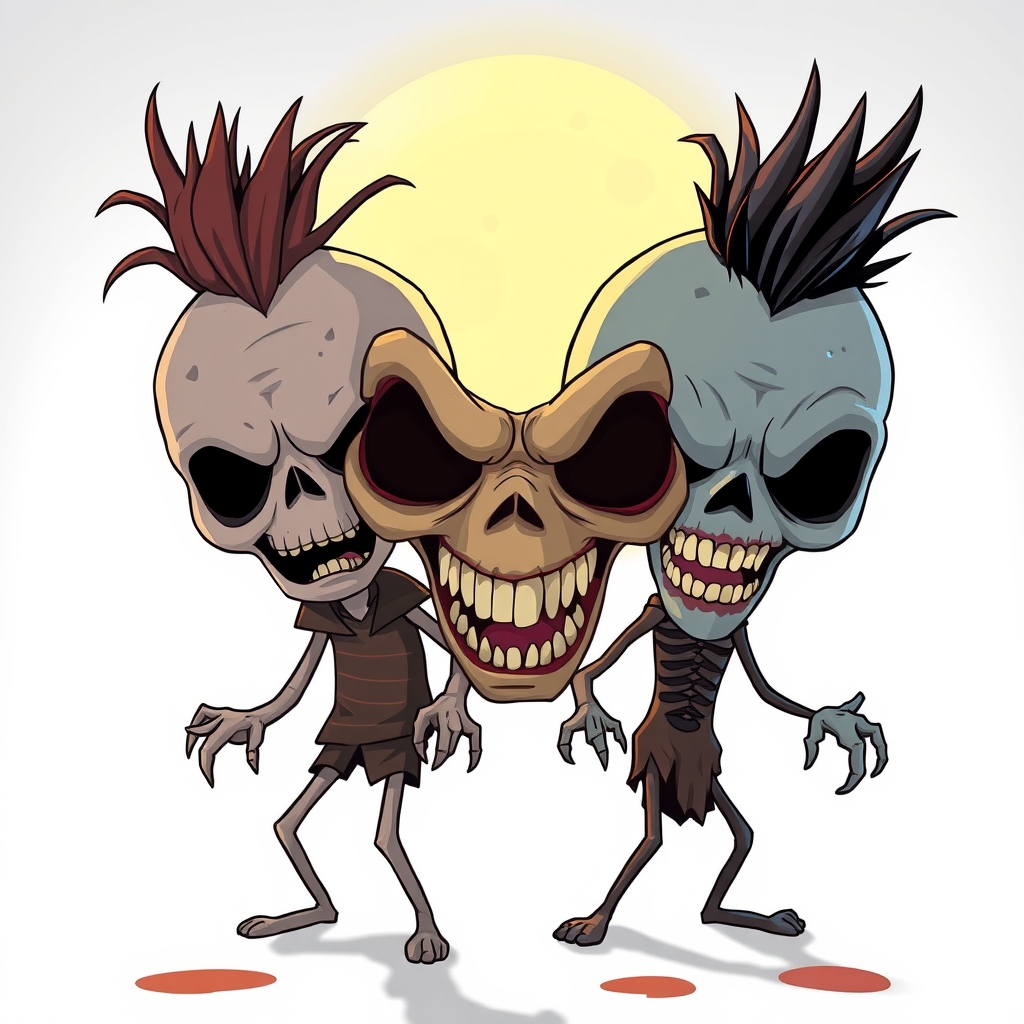
Public Domain Access And The Rise Of Horror Reimaginings
Creative Loopholes – Legal Openings
Many cartoon characters have entered the public domain, allowing filmmakers to use them without licensing fees. This legal shift has opened the door for reinterpretations that often prioritize shock over substance. Characters like Winnie-the-Pooh, Bambi, and Mickey Mouse have already been targeted for horror adaptations. These films are often rushed into production to capitalize on viral interest. The public domain status removes barriers but also removes accountability. Filmmakers can distort beloved icons without concern for brand integrity. This freedom is often misused to generate attention rather than quality. The result is a wave of films that feel exploitative rather than innovative. Audiences are left with hollow narratives that rely on recognition rather than resonance. The legal framework enables creativity, but it also invites shortcuts.
| Character | Original Creator | Public Domain Year | Horror Adaptation |
|---|---|---|---|
| Winnie-the-Pooh | A. A. Milne | 2022 | Blood and Honey |
| Bambi | Felix Salten | 2022 | Bambi – The Reckoning |
| Mickey Mouse (Steamboat Willie) | Walt Disney | 2024 | Untitled Horror Projects |
| Peter Pan | J. M. Barrie | 2007 | Neverland Nightmare |
| Cinderella | Charles Perrault | 2022 | Cinderella’s Revenge |
Viral Marketing And Low-Budget Exploitation
Shock Over Substance – Profit Over Craft
The horror genre has long been a haven for low-budget experimentation. However, recent trends show a shift toward viral gimmicks rather than genuine innovation. Films featuring cartoon characters in horror settings often rely on trailers and posters that go viral for their absurdity. These projects are designed to be shared, not necessarily watched. The marketing often overshadows the actual content. Production values are minimal, and storytelling is secondary. The goal is to generate buzz, not build atmosphere. This approach undermines the genre’s potential for emotional and psychological depth. It also alienates audiences who seek meaningful horror experiences. The reliance on recognizable characters is a shortcut that bypasses world-building. Instead of crafting new fears, filmmakers recycle old icons in grotesque ways.
- Viral trailers often outperform the films themselves in engagement.
- Posters feature exaggerated gore and twisted nostalgia.
- Social media campaigns rely on shock and meme culture.
- Budget constraints lead to poor effects and shallow scripts.
- Audience retention drops after initial curiosity fades.
- Critics cite lack of originality and emotional depth.
- Streaming platforms prioritize clickbait over quality.
- Merchandise is often rushed and poorly designed.
- Fan backlash grows with each new adaptation.
- The genre’s reputation suffers from overexposure.
Audience Fatigue And The Collapse Of Emotional Engagement
Nostalgia Burnout – Diminishing Returns
Audiences once drawn to horror for its psychological tension and symbolic depth are increasingly disengaged. The overuse of cartoon characters as horror antagonists has created a fatigue effect. Instead of provoking fear, these films often elicit confusion or boredom. The novelty wears thin after repeated exposure to the same formula. Viewers begin to anticipate the twist—childhood icon turned killer—before the trailer ends. This predictability erodes suspense, a cornerstone of effective horror. Emotional investment declines when characters lack motivation or complexity. The violence feels arbitrary, not earned. Horror loses its grip when it becomes a parody of itself. The genre’s power lies in its ability to disturb and reflect, not just shock. When audiences stop caring, horror stops working.
| Viewer Response | Description | Impact On Genre |
|---|---|---|
| Initial Curiosity | Driven by novelty and nostalgia | High trailer views, low retention |
| Predictable Tropes | Recycled character arcs and setups | Reduced suspense and engagement |
| Emotional Detachment | Lack of character depth or stakes | Weak audience connection |
| Genre Saturation | Too many similar adaptations | Diminished uniqueness and appeal |
| Backlash And Critique | Viewer frustration and criticism | Negative reviews and poor word-of-mouth |
Psychological Depth Replaced By Surface-Level Shock
Hollow Fear – The Absence Of Subtext
Traditional horror thrives on ambiguity, metaphor, and the slow unraveling of dread. When cartoon characters are reimagined as killers, the subtlety is often stripped away. These films rarely explore the psychology of fear or the emotional terrain of their characters. Instead, they rely on grotesque visuals and exaggerated violence to provoke a reaction. The result is a flattening of the genre’s emotional range. Audiences are not invited to reflect or empathize, only to recoil. The horror becomes mechanical, a series of jolts without connective tissue. This approach ignores the genre’s roots in folklore, trauma, and social commentary. It also limits the potential for lasting impact. Fear that doesn’t linger is fear wasted. When horror forgets its emotional core, it loses its cultural relevance.
| Element | Traditional Horror | Cartoon Horror Adaptations |
|---|---|---|
| Fear Mechanism | Psychological tension, atmosphere | Jump scares, gore, shock value |
| Character Depth | Complex, flawed, evolving | Flat, symbolic, underdeveloped |
| Narrative Structure | Slow build, thematic layering | Fast pacing, minimal exposition |
| Emotional Impact | Lingering dread, moral ambiguity | Brief discomfort, visual overload |
| Symbolism | Allegorical, metaphor-rich | Rare, often absent or ironic |
Missed Opportunities For Original Horror Storytelling
Creative Stagnation – The Cost Of Familiarity
The horror genre has always been a space for innovation. From German expressionism to modern psychological thrillers, it has evolved by confronting new fears. Yet the current trend of cartoon horror adaptations signals a retreat from that legacy. Instead of inventing new monsters or exploring contemporary anxieties, filmmakers recycle familiar faces. This repetition stifles originality and narrows the genre’s scope. There are countless untapped fears in the digital age—surveillance, ecological collapse, algorithmic control—that remain unexplored. By focusing on twisted nostalgia, creators miss the chance to reflect the present. Horror should evolve with its audience, not pander to its past. The genre’s vitality depends on its ability to surprise and disturb in new ways. Familiarity may sell tickets, but it rarely leaves a mark. The future of horror lies in invention, not imitation.
- Horror has historically responded to cultural shifts—war, disease, technology.
- Current adaptations ignore modern fears in favor of visual gimmicks.
- New subgenres like eco-horror and tech-horror remain underdeveloped.
- Audiences crave originality but are offered repetition.
- Streaming platforms reward fast production over thoughtful writing.
- Independent creators struggle to compete with viral gimmicks.
- Thematic horror (e.g., grief, identity, isolation) is sidelined.
- Symbolic monsters are replaced by literal cartoon killers.
- The genre’s potential for social critique is diluted.
- Innovation is sacrificed for short-term marketability.
The Distortion Of Childhood Icons And Cultural Memory
Symbolic Erosion – From Archetype To Anomaly
Cartoon characters often serve as cultural touchstones, representing innocence, humor, or moral clarity. When these classic icons and childhood figures are reimagined as violent antagonists, their symbolic value is inverted. This inversion can be provocative, but it is rarely handled with care. Instead of exploring the tension between innocence and corruption, these films often revel in desecration. The result is a kind of symbolic vandalism. Characters that once offered comfort are turned into grotesque parodies. This shift can confuse younger audiences and alienate older ones. It also reflects a broader cultural cynicism, where nothing is sacred and everything is fodder. The transformation of icons into monsters mirrors a loss of trust in shared narratives. But without thoughtful framing, this transformation feels hollow. Horror should challenge symbols, not just deface them.
| Iconic Character | Original Symbolism | Horror Reinterpretation | Cultural Impact |
|---|---|---|---|
| Winnie-the-Pooh | Innocence, friendship | Brutality, stalking | Confusion, backlash |
| Bambi | Vulnerability, nature | Predator, revenge | Loss of emotional resonance |
| Peter Pan | Eternal youth, wonder | Abduction, madness | Undermines childhood fantasy |
| Mickey Mouse | Joy, optimism | Violence, chaos | Brand dissonance, legal tension |
| Cinderella | Hope, transformation | Vengeance, bloodlust | Distorted gender symbolism |
The Role Of Independent Studios And Exploitation Economics
Budget Constraints – Creativity Or Corner-Cutting
Many of these horror adaptations are produced by small studios operating on limited budgets. While low-budget horror has historically driven innovation, the current wave often prioritizes speed over substance. The goal is to capitalize on public domain access and viral marketing before the novelty fades. This leads to rushed scripts, minimal production design, and underdeveloped characters. The economics reward quantity over quality. Some studios release multiple adaptations in a single year, each more absurd than the last. This model treats horror as disposable content rather than a craft. It also exploits audience curiosity without delivering meaningful experiences. The result is a glut of forgettable films that dilute the genre’s reputation. True low-budget horror succeeds when it compensates for resources with vision. These adaptations often lack both.
- Independent studios face pressure to produce quickly.
- Public domain characters reduce licensing costs.
- Viral marketing replaces traditional promotion.
- Scripts are often written in weeks, not months.
- Sets and effects are minimal or reused.
- Actors are underpaid and under-directed.
- Distribution relies on streaming platforms with low curation.
- Audience trust erodes with each low-effort release.
- Critical reception is overwhelmingly negative.
- The model is profitable but unsustainable.
Genre Confusion And The Blurring Of Horror’s Boundaries
Identity Crisis – What Counts As Horror
As cartoon horror adaptations proliferate, the definition of horror itself becomes muddled. These films often blend parody, slasher tropes, and surrealism without clear intent. The result is tonal inconsistency. Is the audience meant to laugh, scream, or cringe? This confusion undermines the emotional contract between filmmaker and viewer. Horror relies on a shared understanding of stakes and tone. When that understanding is broken, the experience becomes disjointed. Some adaptations lean into absurdity, others attempt sincerity, but few succeed at either. The genre’s boundaries are stretched, but not in productive ways. Instead of expanding horror’s emotional range, these films dilute it. They borrow the aesthetics of horror without its discipline. The result is a genre that feels less coherent and more commodified.
| Film Element | Traditional Horror | Cartoon Horror Adaptations |
|---|---|---|
| Tone | Consistent, escalating dread | Inconsistent, often ironic |
| Stakes | Clear, emotionally grounded | Arbitrary, exaggerated |
| Genre Blending | Purposeful, thematic | Random, disorienting |
| Audience Reaction | Fear, reflection | Confusion, detachment |
| Narrative Cohesion | Structured, symbolic | Fragmented, gimmick-driven |
The Erosion Of Genre Respect And Audience Trust
Cynicism Over Craft – Breaking The Contract
Horror has always operated on a delicate contract between creator and viewer. That contract promises emotional honesty, thematic depth, and a respect for fear as a transformative experience. When cartoon characters are repurposed as horror villains without narrative justification, that contract is broken. Audiences feel manipulated rather than engaged. The use of familiar icons becomes a bait-and-switch tactic, drawing viewers in with nostalgia only to deliver incoherent violence. This approach breeds cynicism. Viewers begin to expect disappointment, and their trust in the genre erodes. Horror becomes a punchline, not a portal. The horror genre’s reputation suffers from this when its symbols are used carelessly. Respect for the audience means crafting stories that challenge, disturb, and resonate—not just shock. When that respect is lost, horror loses its power to move.
| Trust Factor | Traditional Horror | Cartoon Horror Adaptations | Viewer Response |
|---|---|---|---|
| Emotional Honesty | High | Low | Disengagement |
| Thematic Depth | Rich, layered | Minimal, surface-level | Frustration |
| Symbolic Integrity | Preserved | Distorted | Confusion |
| Narrative Justification | Strong | Weak or absent | Cynicism |
| Viewer Satisfaction | Earned | Undermined | Declining loyalty |
The Absence Of Atmosphere And World-Building
Flat Settings – No Place To Feel Afraid
Atmosphere is the soul of horror. It’s the unseen presence that lingers in shadows, the tension that builds in silence. Without it, fear becomes mechanical. Many cartoon horror adaptations neglect atmosphere entirely. Their settings are generic, their lighting flat, their sound design uninspired. These films often take place in empty forests, abandoned buildings, or poorly lit interiors with no sense of place. There’s no history, no mood, no emotional geography. World-building is sacrificed for speed. The result is a horror experience that feels disconnected and disposable. Great horror immerses the viewer in a world that feels alive, even if haunted. These adaptations rarely attempt that immersion. They rely on the character’s name to carry the weight, ignoring the environment that gives horror its texture. Without atmosphere, fear cannot breathe.
- Effective horror uses setting to amplify emotion.
- Sound design creates tension through silence and distortion.
- Lighting shapes mood and reveals psychological subtext.
- World-building offers context and stakes.
- Generic settings flatten the emotional landscape.
- Abandoned buildings and forests are overused clichés.
- Lack of spatial logic disrupts immersion.
- Poor production design signals creative shortcuts.
- Atmosphere requires time, intention, and detail.
- Without it, horror becomes forgettable.
The Commodification Of Fear And Nostalgia
Market Over Meaning – Selling Childhood Back As Violence
Fear and nostalgia are powerful emotional currencies. When used thoughtfully, they can deepen a story’s impact. But when commodified, they become tools of manipulation. Cartoon horror adaptations often treat nostalgia as a marketing hook rather than a narrative device. The goal is not to explore the emotional resonance of childhood, but to exploit it. These films sell fear as spectacle, not experience. They repackage innocence as brutality, banking on the shock of contrast. This commodification reduces complex emotions to viral content. It also reflects a broader cultural trend of turning memory into merchandise. Horror becomes a transaction, not a transformation. The viewer is not invited to reflect, only to consume. This shift undermines the genre’s potential for catharsis and critique. Fear should be felt, not sold. Nostalgia should be honored, not weaponized.
| Emotional Element | Thoughtful Use | Commodified Use | Result |
|---|---|---|---|
| Nostalgia | Reflective, symbolic | Viral, superficial | Emotional detachment |
| Fear | Transformative, thematic | Spectacle-driven | Viewer fatigue |
| Childhood Memory | Explored with nuance | Repackaged for shock | Cultural erosion |
| Emotional Currency | Deepens narrative | Drives clicks | Shallow engagement |
| Viewer Experience | Immersive, resonant | Disposable, viral | Loss of meaning |
The Failure To Evolve Horror’s Emotional Vocabulary
Stunted Expression – Repeating What Once Worked
Horror is a language. It speaks through metaphor, pacing, and emotional rhythm. When that language stagnates, the genre suffers. Cartoon horror adaptations often repeat the same emotional beats—shock, gore, irony—without variation. There’s little exploration of grief, guilt, longing, or existential dread. These films rarely ask what fear means or where it comes from. Instead, they mimic the surface of horror without its soul. This failure to evolve emotional vocabulary limits the genre’s expressive range. It also alienates viewers who seek more than visual discomfort. Horror should be a mirror, not just a mask. It should reflect the complexities of human emotion, not reduce them to caricature. When filmmakers stop asking new questions, horror stops growing. The genre’s vitality depends on its ability to feel deeply, not just scream loudly.
- Horror can express grief, trauma, isolation, and transformation.
- Emotional rhythm shapes pacing and tension.
- Repetition of shock and gore flattens emotional range.
- Irony without depth becomes parody.
- Viewers crave emotional complexity, not just discomfort.
- Horror should evolve with cultural and psychological shifts.
- Emotional vocabulary includes silence, ambiguity, and contradiction.
- Surface-level fear lacks staying power.
- The genre’s growth depends on expressive diversity.
- Feeling deeply is more powerful than shocking briefly.
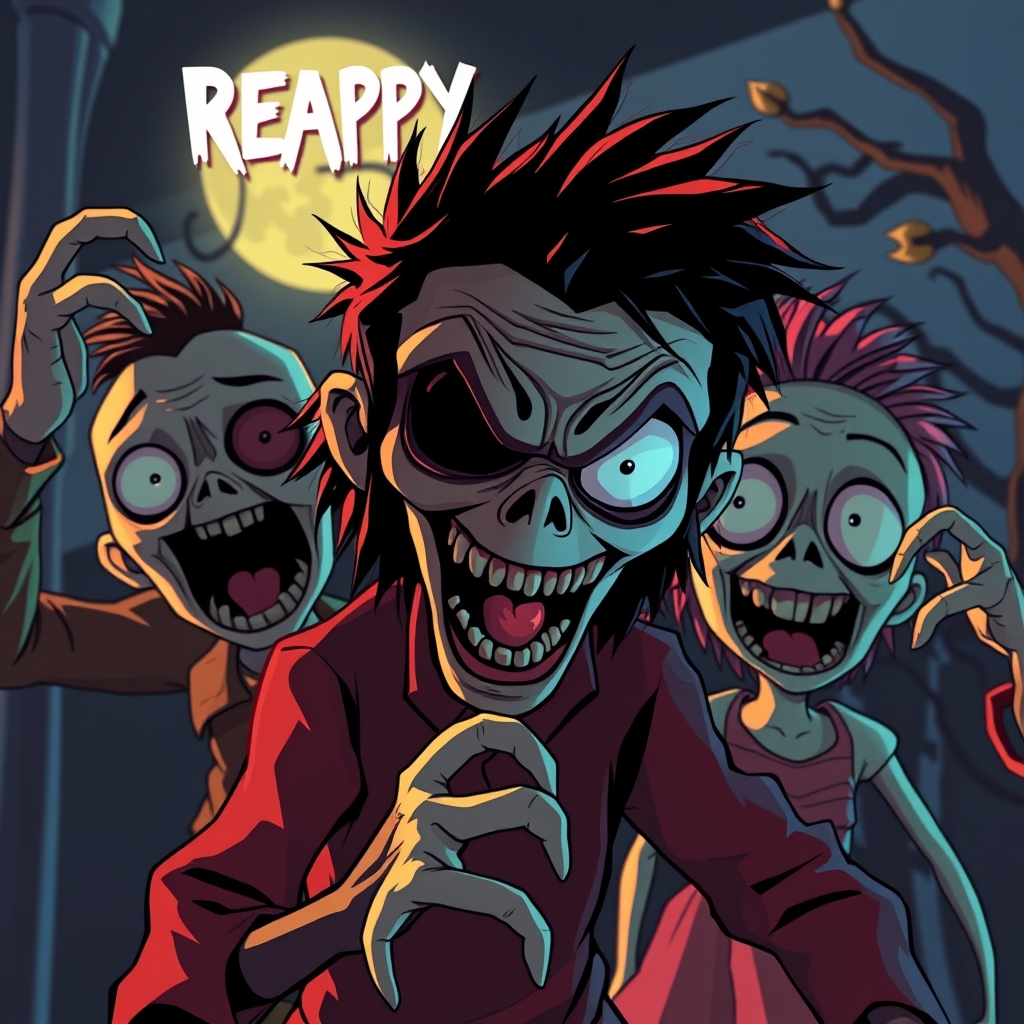
The Disconnect Between Creator Intent And Audience Expectation
Misaligned Vision – Who Is This For
One of the most troubling aspects of cartoon horror adaptations is their lack of clear audience targeting. These films often exist in a tonal limbo—too grotesque for children, too shallow for adults. The result is confusion. Viewers don’t know how to engage. Is this satire, homage, or exploitation? The creator’s intent is rarely communicated, and the audience’s expectations are ignored. This disconnect leads to poor reception and cultural backlash. Horror works best when it understands its audience’s fears and desires. These adaptations often feel like inside jokes told to the wrong crowd. The lack of emotional clarity undermines the experience. Filmmakers must ask who they’re speaking to and why. Without that clarity, horror becomes noise. The genre deserves intentionality, not ambiguity.
| Creative Element | Clear Intent | Misaligned Intent | Audience Reaction |
|---|---|---|---|
| Tone | Consistent, purposeful | Confused, erratic | Disengagement |
| Target Audience | Defined, respected | Vague, ignored | Frustration |
| Emotional Clarity | Present, layered | Absent, muddled | Alienation |
| Narrative Purpose | Thematic, symbolic | Gimmick-driven | Negative reviews |
| Viewer Engagement | Active, reflective | Passive, confused | Declining interest |
Rediscovering Horror’s Emotional Core Through Original Characters
Symbolic Creation – Building New Icons
When horror filmmakers invest in original characters, they create new emotional landscapes. These characters are not bound by nostalgia or public domain constraints. They emerge from contemporary fears, cultural shifts, and personal trauma. Original horror icons—like those in films such as “Hereditary,” “The Babadook,” or “It Follows”—resonate because they reflect something real. They are metaphors for grief, anxiety, or social alienation. Their design is intentional, their behavior symbolic. These characters invite reflection, not just reaction. They become part of the genre’s evolving vocabulary. Unlike cartoon adaptations, which rely on recognition, original characters build their own mythology. They offer space for emotional complexity and thematic layering. Horror becomes a mirror again, not a meme. The genre thrives when it creates, not just distorts.
| Film | Original Horror Icon | Symbolic Theme | Emotional Impact |
|---|---|---|---|
| Hereditary | Paimon’s cult | Grief, family trauma | Deep unease, lingering dread |
| The Babadook | The Babadook | Repressed grief, motherhood | Catharsis, psychological tension |
| It Follows | Shape-shifting entity | Sexual anxiety, mortality | Paranoia, existential fear |
| The Witch | Black Phillip | Religious hysteria, isolation | Historical dread, moral ambiguity |
| Get Out | The Armitage family | Racism, identity theft | Social horror, cultural critique |
Embracing Cultural Horror And Multinational Storytelling
Global Perspectives – Expanding The Genre’s Reach
Some of the most compelling horror in recent years has come from outside the Hollywood system. Films from South Korea, Indonesia, Mexico, and Nigeria have introduced new fears, new rhythms, and new emotional textures. These stories often draw from local folklore, spiritual beliefs, and historical trauma. They offer fresh perspectives on what horror can be. Instead of relying on cartoon characters, they build tension through cultural specificity. The result is a genre that feels alive, diverse, and resonant. Horror becomes a global conversation, not a recycled formula. These films also challenge Western tropes, offering alternatives to slasher clichés and jump-scare dependency. They prove that horror can be deeply rooted in place, language, and ritual. When filmmakers embrace cultural storytelling, they expand the genre’s emotional and symbolic range.
- South Korean horror blends family drama with supernatural dread.
- Indonesian horror draws from animist beliefs and colonial trauma.
- Mexican horror explores Catholic guilt and mythic violence.
- Nigerian horror incorporates ancestral spirits and urban legends.
- Japanese horror uses silence and ambiguity to evoke fear.
- Thai horror often centers on karmic justice and reincarnation.
- Indian horror explores caste, gender, and spiritual possession.
- Brazilian horror reflects ecological collapse and political unrest.
- Iranian horror uses metaphor to bypass censorship.
- Global horror deepens the genre’s emotional and symbolic vocabulary.
Reclaiming Atmosphere Through Cinematic Craft
Visual Precision – Fear In The Details
Atmosphere is not just a mood—it’s a method. It’s how horror speaks without words. When filmmakers focus on lighting, sound, pacing, and spatial design, they create immersive experiences. These elements build tension slowly, allowing fear to bloom. Films like “The Others,” “The Lighthouse,” and “Saint Maud” succeed because they understand this craft. They use silence as a tool, shadows as language. Horror becomes a sensory experience, not just a visual one. This approach contrasts sharply with cartoon adaptations, which often ignore atmosphere entirely. By reclaiming cinematic precision, horror returns to its roots. It becomes about what’s felt, not just what’s seen. The genre’s power lies in its ability to haunt, not just startle. Atmosphere is the architecture of fear. Without it, horror collapses.
| Cinematic Element | Purpose In Horror | Effective Use |
|---|---|---|
| Lighting | Shapes mood, reveals subtext | Shadows, candlelight, contrast |
| Sound Design | Builds tension, evokes emotion | Silence, distortion, ambient noise |
| Pacing | Controls emotional rhythm | Slow reveals, delayed scares |
| Spatial Logic | Grounds fear in place | Claustrophobic rooms, open voids |
| Visual Symbolism | Adds thematic depth | Mirrors, thresholds, decay |
Exploring Psychological Horror And Internal Conflict
Mind As Monster – Fear From Within
Psychological horror focuses on the internal rather than the external. These stories often blur the line between reality and hallucination. They challenge the viewer to interpret, not just react. Films like “Black Swan,” “The Shining,” and “Rosemary’s Baby” succeed because they make the mind the battleground. The horror is not in the monster, but in the unraveling. This approach offers emotional depth and symbolic richness. It also respects the viewer’s intelligence. Psychological horror invites analysis, discussion, and reflection. Cartoon adaptations rarely attempt this complexity. They focus on spectacle, not psyche. But the most lasting horror comes from within. When filmmakers explore the mind, they expand the genre’s emotional terrain.
- Psychological horror uses ambiguity to create tension.
- Characters often face internal conflict or mental deterioration.
- Themes include identity loss, paranoia, and existential dread.
- The viewer is asked to interpret, not just observe.
- Symbolism replaces literal monsters.
- Fear becomes personal, not just situational.
- The genre gains emotional and intellectual depth.
- Psychological horror often overlaps with drama and surrealism.
- It challenges genre boundaries and audience expectations.
- Internal conflict creates lasting emotional resonance.
Integrating Ecological Horror And Environmental Themes
Nature As Nemesis – The Planet Strikes Back
Ecological horror is an emerging subgenre that explores the relationship between humans and the environment. It reflects growing anxieties about climate change, extinction, and ecological collapse. These stories often depict nature as a force of retribution or transformation. Films like “The Ruins,” “Annihilation,” and “Gaia” use landscape as antagonist. The horror comes from what we’ve done to the world—and what it might do in return. This approach offers symbolic richness and contemporary relevance. It also expands the genre’s emotional range, connecting fear to guilt, awe, and responsibility. Ecological horror invites viewers to reflect on their place in the natural order. It challenges the anthropocentric lens of traditional horror. Cartoon adaptations ignore this terrain entirely. But the planet is full of stories waiting to be told. Horror can be a way to listen.
| Ecological Theme | Horror Expression | Emotional Effect |
|---|---|---|
| Climate Collapse | Rising seas, toxic air | Helplessness, dread |
| Extinction | Vanishing species, silence | Grief, guilt |
| Invasive Growth | Mutated plants, spreading decay | Paranoia, loss of control |
| Isolation In Nature | Remote settings, wild threats | Vulnerability, disorientation |
| Human Hubris | Failed experiments, ecological revenge | Moral reckoning, fear of consequence |
Reimagining Horror Through Ritual And Symbolic Design
Archetypal Resonance – Fear As Ceremony
Horror has long drawn power from ritual. Whether rooted in folklore, religion, or personal mythology, ritual gives horror structure and symbolic weight. Films that embrace ceremonial design—like “Midsommar,” “The Wailing,” or “The Ritual”—create immersive worlds where fear is encoded in tradition. These stories unfold slowly, revealing layers of meaning through gesture, costume, and communal behavior. The horror is not just in what happens, but in how it’s framed. Ritual horror invites viewers to witness, not just react. It builds tension through repetition, rhythm, and symbolic escalation. This approach contrasts sharply with cartoon adaptations, which often lack symbolic coherence. By embracing ritual, horror becomes a form of cultural storytelling. It connects fear to ancestry, belief, and transformation. The genre gains depth when it treats fear as sacred, not just shocking.
| Film | Ritual Element | Symbolic Function | Emotional Effect |
|---|---|---|---|
| Midsommar | Seasonal ceremonies | Grief, rebirth, sacrifice | Unease, catharsis |
| The Wailing | Shamanic rites | Spiritual conflict, possession | Confusion, dread |
| The Ritual | Pagan worship | Masculinity, guilt, survival | Isolation, terror |
| Apostle | Blood sacrifice | Faith, colonialism | Horror, moral ambiguity |
| The Vigil | Jewish mourning rites | Trauma, spiritual reckoning | Intimacy, fear of memory |
Elevating Horror Through Character-Driven Storytelling
Emotional Anchors – Fear That Feels
The most enduring horror stories are those rooted in character. When viewers care about the people on screen, every threat becomes more potent. Character-driven horror builds empathy before it builds tension. Films like “The Descent,” “The Invitation,” and “Relic” succeed because they explore relationships, grief, and identity alongside fear. These stories treat horror as an emotional journey, not just a sequence of scares. The characters are flawed, complex, and evolving. Their decisions shape the narrative, and their emotions shape the atmosphere. This approach creates resonance. Viewers are not just watching—they’re feeling. Cartoon adaptations rarely offer this depth. Their characters are symbolic, not human. But horror thrives when it reflects the human condition. Character-driven storytelling makes fear personal, and therefore unforgettable.
- Strong character arcs deepen emotional investment.
- Relationships add stakes and complexity.
- Internal conflict mirrors external threat.
- Empathy amplifies tension and dread.
- Character decisions drive plot, not just reactions.
- Emotional realism grounds supernatural elements.
- Vulnerability creates suspense.
- Identity exploration adds thematic richness.
- Grief and trauma offer symbolic depth.
- Horror becomes a reflection of lived experience.
Reinvigorating Horror Through Experimental Form
Breaking Structure – Fear As Innovation
Some of the most exciting horror in recent years has come from filmmakers willing to break form. These stories challenge traditional structure, pacing, and genre boundaries. Films like “Skinamarink,” “The Empty Man,” and “Come True” use experimental techniques to evoke disorientation, dread, and existential unease. They play with time, silence, and abstraction. Horror becomes a sensory puzzle, not just a narrative. This approach invites viewers to engage differently—to interpret, not just consume. It also expands the genre’s expressive range. Fear is no longer confined to jump scares or gore. It becomes ambient, psychological, and surreal. Cartoon adaptations rarely attempt this innovation. They follow formula, not feeling. But horror grows when it risks confusion in pursuit of revelation. Experimental form makes fear strange again—and that strangeness is powerful.
| Film | Experimental Technique | Narrative Effect | Viewer Experience |
|---|---|---|---|
| Skinamarink | Minimal dialogue, ambient sound | Childhood fear, spatial disorientation | Hypnotic, unsettling |
| The Empty Man | Prologue structure, myth layering | Cult psychology, grief | Slow-burn, cerebral |
| Come True | Dream logic, visual abstraction | Sleep paralysis, identity loss | Surreal, haunting |
| Lake Mungo | Faux-documentary format | Grief, memory, haunting | Intimate, eerie |
| House | Genre chaos, visual absurdity | Family trauma, surrealism | Playful, disturbing |
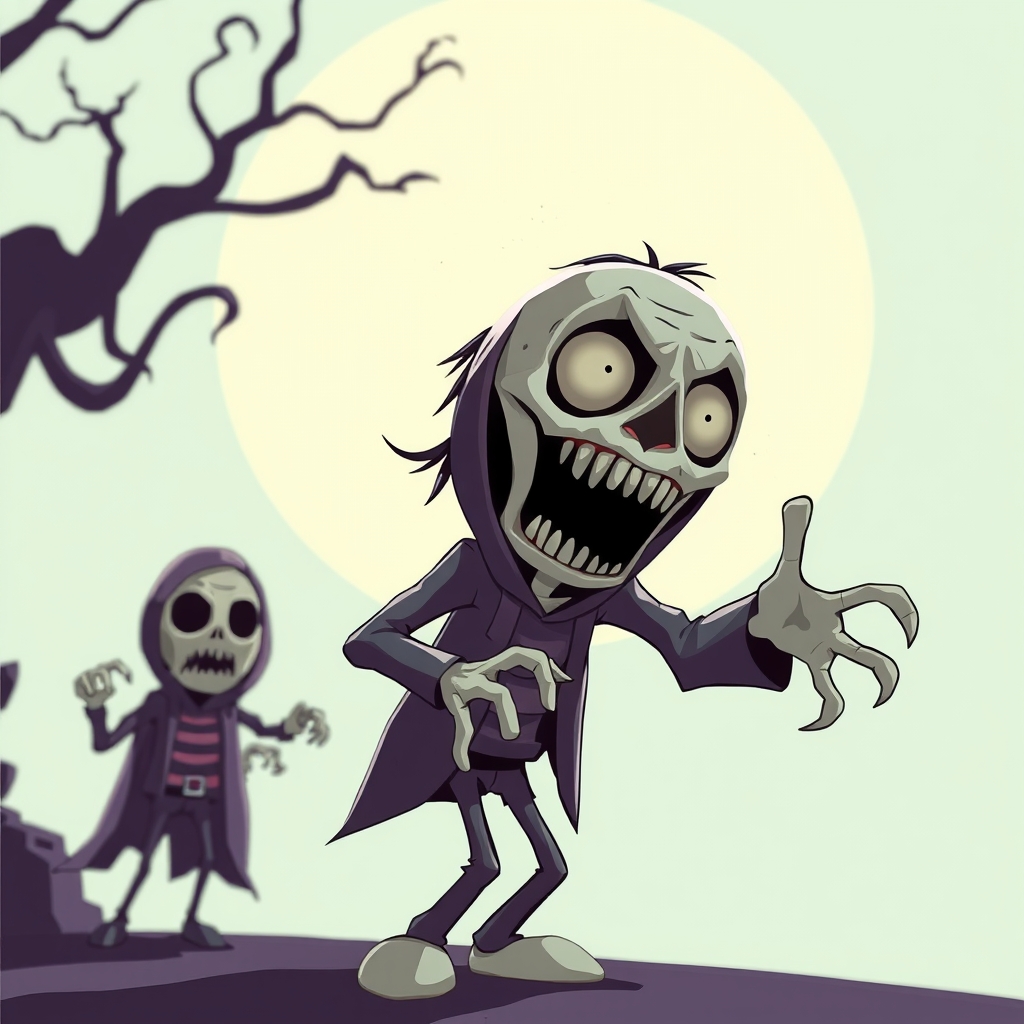
Reclaiming Horror’s Symbolic Language Through Design
Visual Metaphor – Meaning In Every Frame
Symbolism is the heartbeat of meaningful horror. When filmmakers use design intentionally—through color, architecture, costume, and framing—they create layers of meaning that deepen the emotional impact. Films like “Suspiria,” “Crimson Peak,” and “The Cell” use visual metaphor to explore identity, repression, and transformation. Every frame becomes a canvas for fear. This approach treats horror as art, not just entertainment. It respects the viewer’s ability to interpret and reflect. Cartoon adaptations often ignore this potential. Their visuals are functional, not symbolic. But horror gains power when it speaks in metaphor. A red hallway can mean danger, desire, or memory. A mirror can reflect identity or fracture it. When design becomes language, horror becomes poetry. The genre thrives when it’s visually literate.
| Design Element | Symbolic Function | Emotional Effect |
|---|---|---|
| Color Palette | Emotional tone, thematic cues | Mood, subconscious response |
| Architecture | Psychological space, history | Claustrophobia, awe |
| Costume | Identity, transformation | Vulnerability, power |
| Framing | Isolation, connection | Tension, intimacy |
| Lighting | Revelation, concealment | Suspense, ambiguity |
Conclusion – Horror’s Future Lies In Depth, Not Distortion
The trend of turning cartoon characters into horror villains reflects a creative shortcut, not a breakthrough. While these adaptations may generate viral interest, they rarely offer emotional or symbolic depth. Horror is a genre built on fear, but fear must be earned. It must be rooted in character, atmosphere, ritual, and meaning. The most powerful horror stories are those that reflect the human condition, challenge cultural norms, and explore emotional truth. By returning to these foundations—and embracing innovation, symbolism, and global perspectives—filmmakers can reinvigorate the genre. Horror deserves more than gimmicks. It deserves reverence, risk, and resonance. The future of horror lies not in distortion, but in depth.
Join The Discussion
What kind of horror stories resonate with you most? Do you prefer psychological tension, symbolic design, or cultural storytelling?
#HorrorDesign #SymbolicStorytelling #GlobalHorror #EmotionalDepth #AtmosphericCinema #ExperimentalHorror #CharacterDrivenFear #RitualInFilm #VisualMetaphor #GenreEvolution
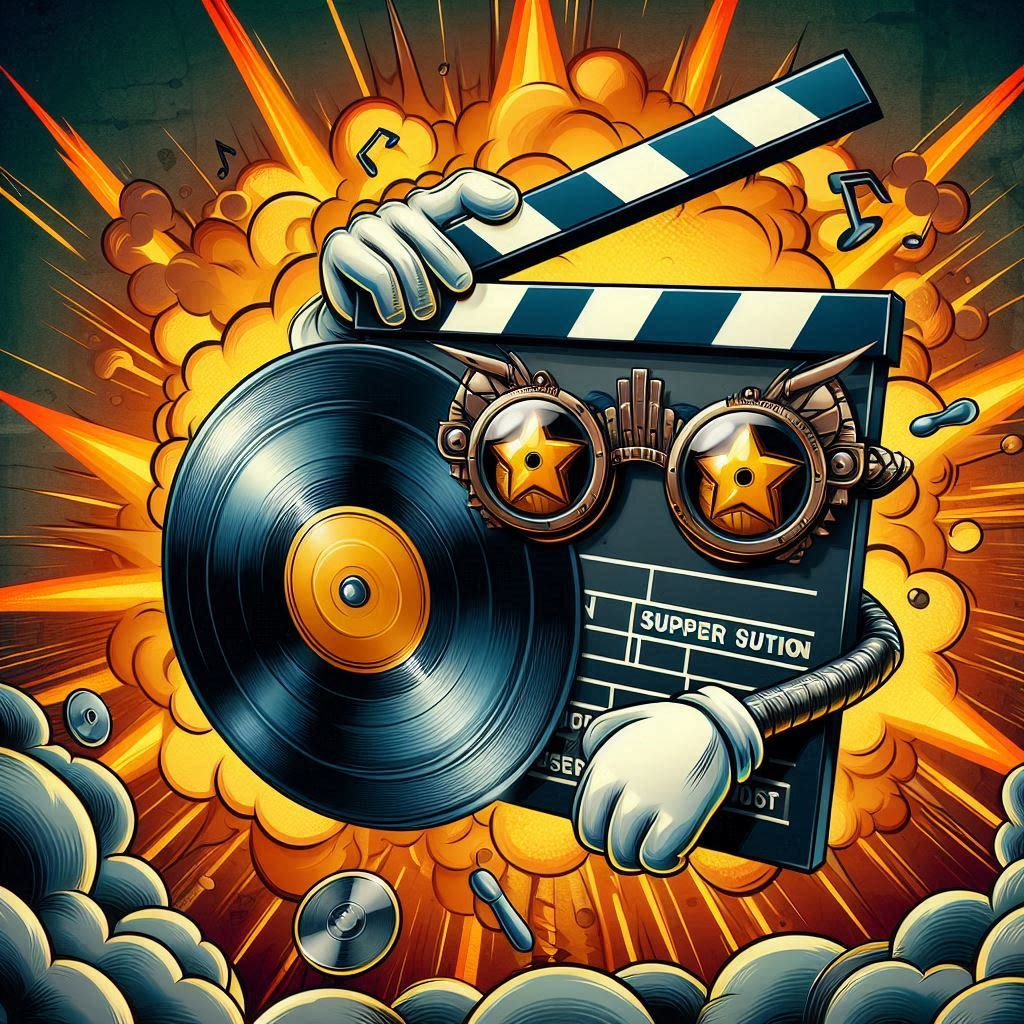

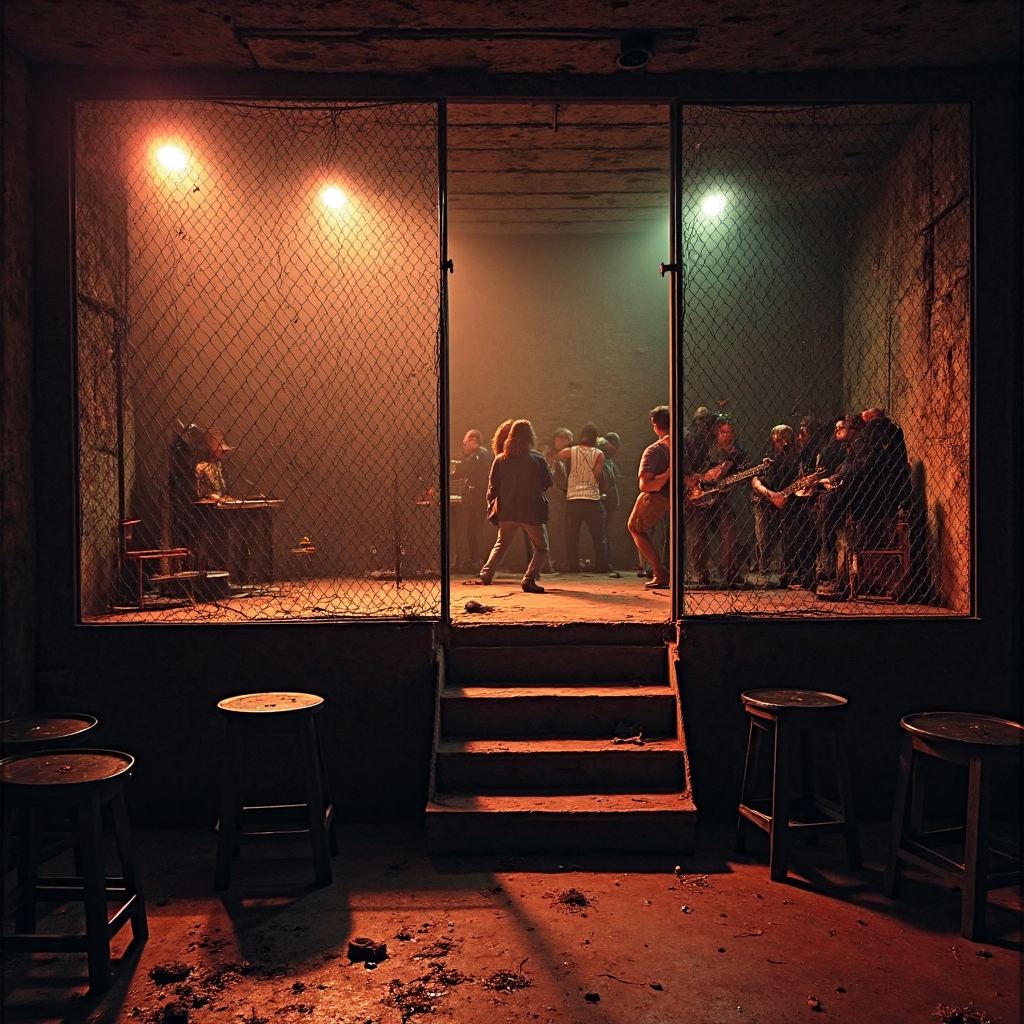
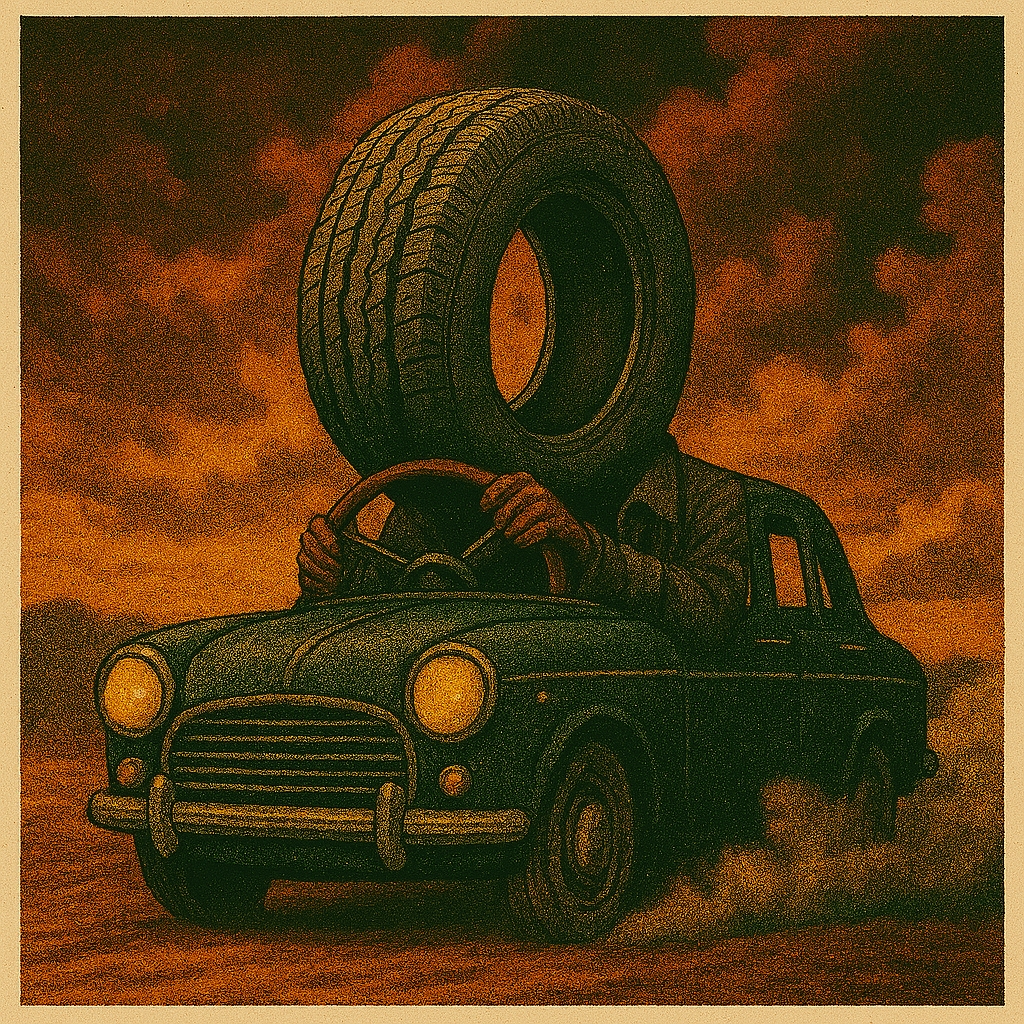
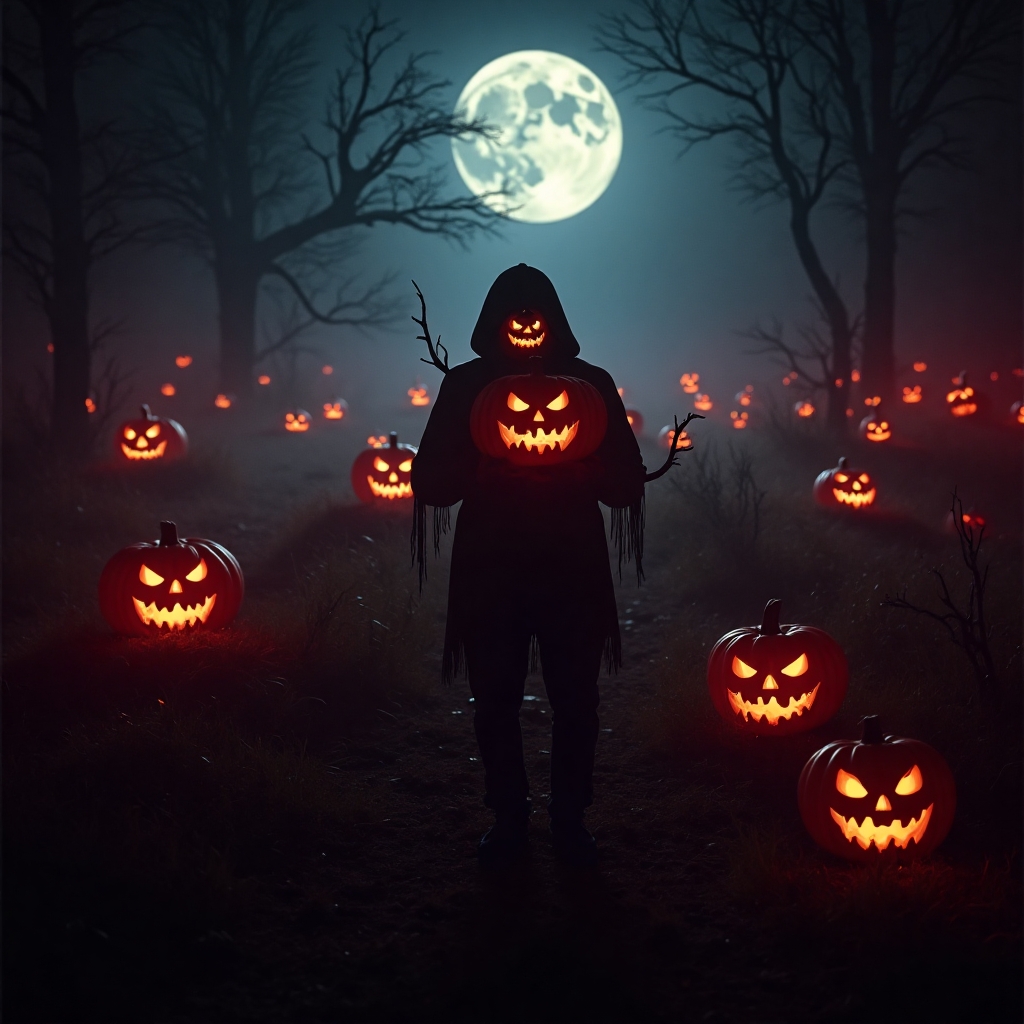
Leave a Reply